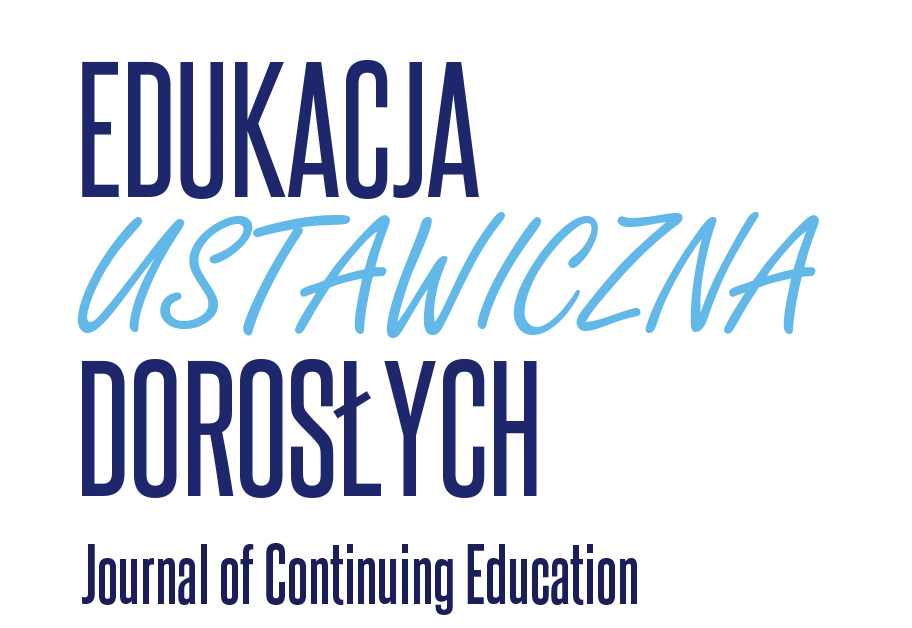Metoda „pro-kontra” w edukacji ustawicznej ![]()
DOI: 10.34866/0tm9-7b02
Aleksander Marszałek ORCID: 0000-0001-8953-5332
Pros and cons method in lifelong education
Słowa kluczowe: dyskusja, dyskusja „pro-kontra”, metody aktywizujące, edukacja ustawiczna, antylogia.
Key words: discussion, pros and cons discussion, activating methods, lifelong education, antilogy.
Streszczenie: W artykule przedstawiono znaczenie, rodowód, specyfikę oraz przebieg metody pro-kontra. Rozważania teoretyczne uzupełnia opis zajęć z wykorzystaniem metody „pro-kontra” oraz przebieg i wyniki badania jej przydatności w kształceniu ustawicznym. Metoda „pro-kontra” jest odmianą dyskusji, która jest jedną z podstawowych metod umożliwiających kształtowanie szeregu umiejętności kluczowych. Metoda ta wywodzi się z antylogii – opracowanego w starożytnej Grecji sposobu wywodu, polegającego na rozpatrywaniu zagadnienia z dwóch przeciwstawnych stron. Badania przeprowadzone na 43 nauczycielach szkół zawodowych i ogólnokształcących pokazują, że dyskusja „pro-kontra” jest metodą mało znaną. Zdecydowana większość nauczycieli po ukończeniu kursu, na którym zapoznała się z metodą, wypowiada się za jej dużą przydatnością, łatwością wdrożenia i zapewnia o systematycznym i efektywnym stosowaniu jej w procesie kształcenia.
Abstract: The article presents the meaning, the origin, specificity and the course of the “pros and cons method”. The theoretical considerations are supplemented with a description of classes using the “pros and cons” method, as well as the course and results of testing its usefulness in lifelong learning. The method is a variety of discussion, which is one of the basic methods that allows shaping a number of key skills. This method is derived from antilogy – a method of deduction developed in ancient Greece, consisting in considering a problem from two opposite sides. The research conducted on 43 teachers of vocational and general education schools shows that the pros and cons discussion is a little known method. The vast majority of teachers, after completing the course during which they got acquainted with the method, speak for its great usefulness, ease of implementation and ensure its systematic and effective use in the educational process.


